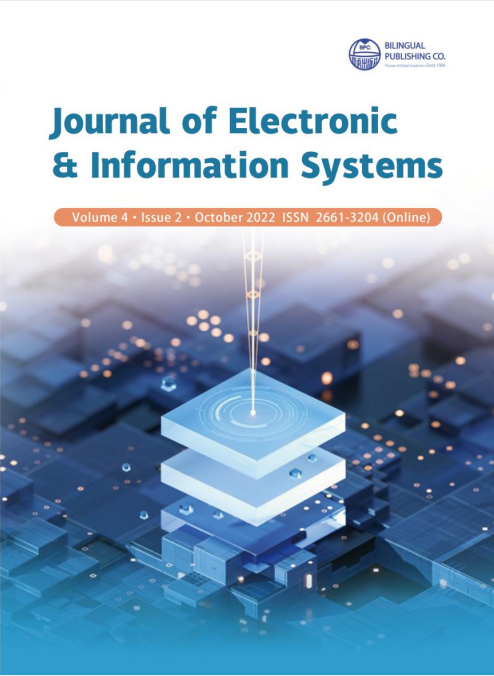-
6473
-
1731
-
1204
-
1120
-
1086
Deploying a Deep Learning-based Application for an Efficient Thermal Energy Storage Air-Conditioning (TES-AC) System: Design Guidelines
DOI:
https://doi.org/10.30564/jeis.v4i2.5211Abstract
Facility management and maintenance of the Thermal-Energy-Storage AirConditioning (TES-AC) system is a tedious task at a large scale mainly due to the charging load that can increase energy consumption if needed to be charged at peak hours. Besides, maintenance of TES-AC at a large scale gets complex as it contains many sensor data. By utilizing deep learning techniques on the sensor data, charging load prediction can be made possible, so facility managers can prepare in advance. However, a deep learning-based application will be unusable if it is not deployed in a userfriendly manner where facility managers can benefit from this application. Hence, this research focuses on gathering design guidelines for a deep learning-based application and further validates the design considerations with a developed application for efficient human-computer interaction through qualitative analysis. The approach taken to gather design guidelines demonstrated a positive correlation between expert-suggested features and the user-friendly aspect of the application as 67.08% of participants found the features suggested by experts to be most satisfactory. Furthermore, it evaluates user satisfaction with the advanced developed application for TES-AC according to the gathered design guidelines.
Keywords:
Advanced application, Deep learning, Thermal-energy-storage, Air-Conditioner, Facility management and maintenance, Analysis, Design guidelinesReferences
[1] Bryant, C., 2019. Air conditioning is the world’s next big threat [ Internet]. The Economic Times. [Accessed 2020 Jan]. Available from: https://economictimes.indiatimes.com/news/science/air-conditioning-is-the-worlds-next-big-threat/articleshow/69999842.cms.
[2] MacMillan, A., 2016. Global Warming 101. NRDC [Internet] [Accessed 2019 Oct]. Available from: https://www.nrdc.org/stories/global-warm-ing-101#weather.
[3] Ashish, 2022. How Does an Air Conditioner (AC) Work? [Internet] [Accessed 2022 Aug 25]. Avail-able from: https://www.scienceabc.com/innovation/air-conditioner-ac-work.html.
[4] Awang, N.A., Kamar, H.M., Kamsah, N., 2017. En-ergy saving potential of an air-conditioner-Ice ther-mal storage (AC-ITS) system. Journal of Advanced Research in Fluid Mechanics and Thermal Science. 31(1-10), 1-2.
[5] Tanks, D., 2015. How Thermal Energy Storage Works [Internet] [Accessed 2022 Aug 22]. Available from: https://www.dntanks.com/what-we-do/ther-mal-energy-storage/how-tes-works/.
[6] Araner. Difference Between Air Cooled and Water Cooled Chiller System. [Online]. Ahvailable from: https://www.araner.com/blog/difference-between-air-cooled-and-water-cooled-chiller. [Accessed 30 09 2022].
[7] Araszkiewicz, K., 2017. Digital technologies in Fa-cility Management - the state of practice. Creative Construction Conference 2017, CCC 2017, Primo-sten, Croatia. Procedia Engineering. 196(2017), 1034-1042.
[8] Haines, B., 2016. The benefits of lifecycle BIM for facility management [Internet] [Accessed 2019 Nov]. Available from: https://fmsystems.com/blog/the-benefits-of-lifecycle-bim-for-facility-man-agement/#:~:text=Business%20Information%20Modeling%20(BIM)%20has,transformed%20architecture%2C%20engineering%20and%20con-struction.&text=Facility%20managers%20are%20finding%20value,th.
[9] Education, I.C., 2020. Deep Learning. IBM [Inter-net] [Accessed 2022 Sep 1]. Available from: https://www.ibm.com/cloud/learn/deep-learning#:~:tex-t=Deep%20learning%20is%20a%20subset,from%20large%20amounts%20of%20data.
[10] Mathworks.2022. The mathworks: Deep learning toolbox [Internet] [Accessed 2022 Jan 29]. Avail-able from: https://www.mathworks.com/products/deep-learning.html.
[11] Sanzana, M.R., Abdulrazic, M.O.M., Wong, J.Y., et al., 2022. Effects of external weather on the water consumption of thermal-energy-storage air-condition-ing system. SSRN Electronic Journal. DOI: https://doi.org/10.2139/ssrn.4232763.
[12] Nguyen, H., Makino, Y., Lim, Y., et al., 2017. Short-term prediction of energy consumption of air conditioners based on weather forecast. 2017 4th NAFOSTED Conference on Information and Computer Science; 2017 Nov 24-25; Hanoi, Vietnam. USA: IEEE. Available from: https://ieeexplore.ieee.org/document/8108063
[13] Sanzana, M.R., Maul, T., Wong, J.Y., et al., 2022. Application of deep learning in facility management and maintenance for heating, ventilation, and air conditioning. Automation in Construction. 141(9), 104445.
[14] Sanzana, M.R., Abdulrazic, M., Wong, J.Y., et al., 2022. Analysis of machine learning techniques for predictive maintenance in cooler condition. The In-ternational Symposium on Intelligent Signal Process-ing and Communication Systems (ISPACS); 2022 Nov 22-25; Penang, Malaysia.
[15] O’Brien, H.L., Roll, I., Kampen, A., et al., 2022. Rethinking (Dis)engagement in human-computer interaction. Computers in Human Behavior. 128(3), 107109.
[16] Lee, C., Kim, S., Han, D., et al., 2020. GUIComp: A GUI design assistant with real-time, multi-facet-ed feedback. CHI 20: Proceedings of the 2020 CHI Conference on Human Factors in Computing Sys-tems; 2020 Apr 23. p.1-13.
[17] Seinfeld, S., Feuchtner, T., Maselli, A., et al., 2021. User representations in human-computer interaction. Human-Computer Interaction. 36(5-6), 400-438.
[18] Chaudhari, B.S., Zennaro, M., Borkar, S., 2020. LPWAN technologies: Emerging application char-acteristics, requirements, and design considerations. Future Internet. 12(3), 46.
[19] Stephanidis, C., 2001. User interfaces for all: New perspectives into human-computer interaction. User Interfaces for All-Concepts, Methods, and Tools. Lawrence Erlbaum Associates:Hillsdale, NJ. pp. 3-17.
[20] Martín-Rodilla, P., Panach, J.I., Pastor, O., 2014. User interface design guidelines for rich applications in the context of cultural heritage data. 2014 IEEE Eighth International Conference on Research Chal-lenges in Information Science (RCIS); 2014 May 28-30; Marrakech, Morocco. USA: IEEE.
[21] Femling, F., Olsson, A., Alonso-Fernandez, F., 2018. Fruit and vegetable identification using machine learning for retail appligtcations. 2018 14th Interna-tional Conference on Signal-Image Technology & In-ternet-Based Systems (SITIS); 2018 Nov 26-29; Las Palmas de Gran Canaria, Spain. USA: IEEE.
[22] Park, C.S., Srinivasan, V., 1994. A survey-based method for measuring and understanding brand eq-uity and its extendibility. Journal of Marketing Re-search. 31(2).
[23] Wallace, B.C., Dahabreh, I.J., Trikalinos, T.A., et al., 2012. Closing the gap between methodologists and end-users: R as a computational back-end. Journal of Statistical Software. 49(5).
[24] Eisfeld, H., Kristallovich, F., 2020. The Rise of Dark Mode: A qualitative study of an emerging user inter-face design trend [Internet] [Available from: 2020 Sep 23]. Available from: http://www.diva-portal.org/smash/record.jsf?pid=diva2%3A1464394&d-swid=-2106.
[25] Yang, H., Li, J., Han, Y., et al., 2020. Research on the application of new generation of Human-computer interaction in education. 2020 International Confer-ence on Information Science and Education (ICISE-IE); 2020 Dec 04-06; Sanya, China. USA: IEEE.
[26] Gómez-de-Mariscal, E., García-López-de-Haro, C., Ouyang, W., et al., 2021. DeepImageJ: A user-friend-ly environment to run deep learning models in Im-ageJ. Nature Methods. 18, 1192-1195.
[27] Leung, J., Cockburn, A., 2021. Design framework for interactive highlighting techniques. Foundations and Trends® in Human-Computer Interaction. 14(2-3), 96-271.
Downloads
How to Cite
Issue
Article Type
License
Copyright © 2022 Author(s)

This is an open access article under the Creative Commons Attribution-NonCommercial 4.0 International (CC BY-NC 4.0) License.




 Mirza Rayana Sanzana
Mirza Rayana Sanzana






